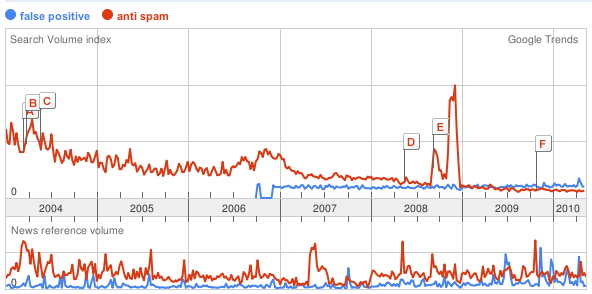Email started in the early 1970s as a store and forward communications service and with a heritage deeply rooted in the history of the Internet, starting with academia and the collegial dimensions of shared supercomputing center users, many of the aspects of this environment persists today.
Email has, like its cousin, the mobile telephone service, adopted an important role as a personal correspondence medium. Addressing is personal. Delivery is rapid and reliable. The inbox a message goes to is generally available only to the addressee. Yes, in some job roles, usually executive-type roles, the message may be intercepted and dispositioned by an administrative assistant on behalf of the boss, but for the overwhelming majority of users it can be reasonably assured that the intended recipient will get the message.
Of course, receipt of a message is no guarantee of anything. It doesn't mean that the user will read the message, forward it, respond to it or even open it.
Abuses of the Medium
Let's try to categorize the abuses of email as a service and as a correspondence medium.
- King of Forwards – Michael Scott, the manager character on The Office considers himself the 'king of forwards.' Here he forwards to all coworkers joke emails, chain letters and otherwise clutters their inbox with background noise.
- Email conversations – team cheers. At one enterprise email was the motivational channel. The chief sales officer would write: 'we need $500k today. Who's going to be first on the board today?' and then eight sales execs would respond, 'me, me, me'….
- Minor non-compliant (to CAN-SPAM Act) email – email solicitations or newsletters not opted-in (but that you can opt-out).
- Major non-compliant (to CAN-SPAM Act) unsubscribe functions not present or that don't work.
- Spam – email masquerading the unsubscribe function to validate working email address without intention of removing the user from the database.
- Spam – phishing – the malicious inpersonation of a legitimate sendor with the intent to leverage that person's or corporation's trust with the recipient to induce them to do something nefarious.
- Spam – social engineering – the written attempt to dupe or con the recipient into providing identity details that can lead to either identity theft or outright theft from bank accounts, credit cards etc.
- Spam – nonsense email – these seemingly harmless messages usually with a couple of paragraphis of text from a storybook or novel are meant for you to send to your spam filter. The spammer wants to de-train your spam filter and 'widen the aperture' as it were. These nonsense messages exhibit none of the characteristics of classic spam and therefore work to loosen the algorithm.
- Spam bearing gifts – containing attachments that contain viruses and spawn a myriad of other security risks beyond messaging resource consumption.
Are there more?









